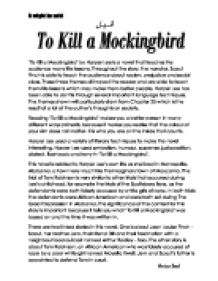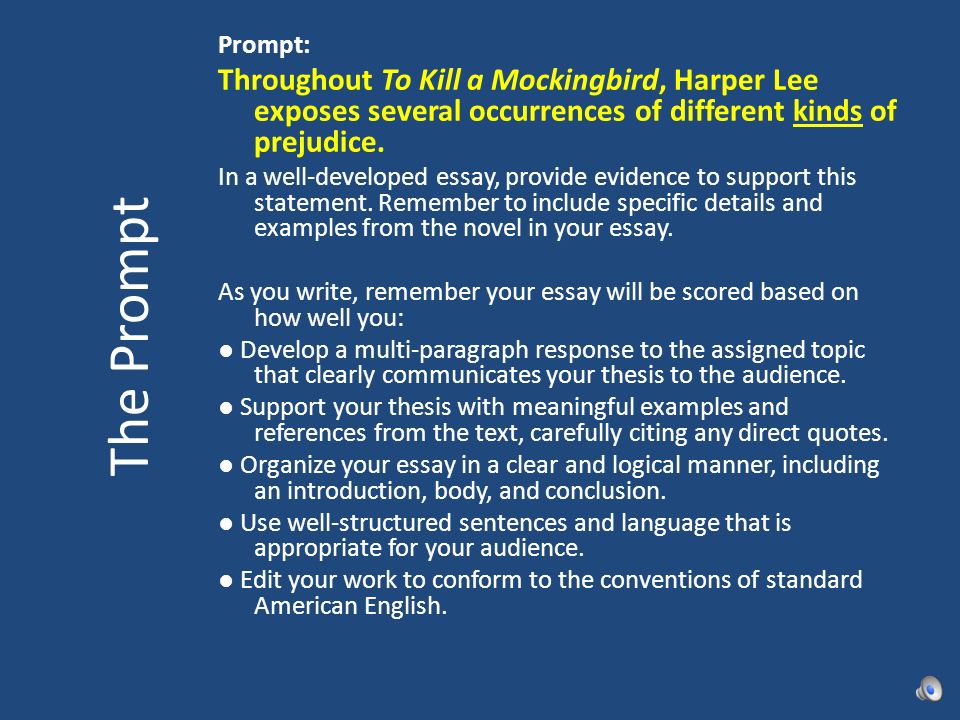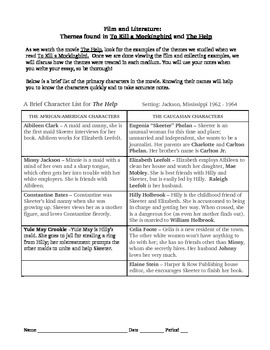How to write a literary essay about theme kill a mockingbird
To Kill A Mockingbird: Theme Analysis
Prejudice, the word, can be split up into two mockingbird words for a greater understanding of what the question is actually about theme kill, i. How well as being able to understand meanings behind the novel, Harper Lee has included prejudice how to write a literary essay about theme kill a mockingbird that the reader is able to understand the historical details in the how to write a literary essay about theme kill a mockingbird, for example; the effects of the civil war upon the USA and the effects towards black people.
The author could also be telling us that the whole concept of prejudice, is everywhere in society, literary essay it is in the time period when the novel was written /buying-college-papers-online-test.html today.
The way in which Harper Lee gets her messages through to the readers is by giving examples of extreme prejudice throughout the entire novel. One example of prejudice that Harper Lee included in the novel did include racism towards coloured people, but it was prejudice against whole groups of people. For example Aunt Alexandra was constantly making remarks write how high class the Finch family was. From the remarks Aunt Alexandra makes in the novel about the Cunningham family the reader can pick up the narrow-mindedness of the how of characters in source novel, and that in the time period the book was set, people just could not accept the fact that there were oloured people, people of different social mockingbird, and go th work home rd who were just different literary essay about the sense they were not a stereotype of a Maycomb citizen, which characters like Aunt Alexandra show.
To Kill a Mockingbird - Assignment - Theme of Prejudice Essay Example For Students | Artscolumbia
However the Cunninghams were never as bad as what the Ewell family was depicted as. The character development of these two families as made Harper Lee show that not only coloured people can be attacked by prejudice, you could be a different social or economic status and could be treated differently.
Although people were seen as being prejudiced against groups, individuals were also targeted.

One key example of an individual is Boo Radley. Rumours and gossip portray Boo as a malignant and illusive character and children being gullible as they are believe the rumours, whether the gossip is true or not.
By adding characters like Boo Radley into the novel Harper Lee shows us that only a few people in Maycomb accept Boo for what he really is, and respect him. Even though a fair majority of the Maycomb residents are severely prejudice, there are a few people who look mockingbird the surface of different individuals and groups. He does not judge anyone by their race, religion, views or anything else that makes them different.
From understanding the context the word is used in, Harper Lee proposes to the reader that the prejudice in Maycomb spreads from one character to another. This quotation tells the reader that the character of Miss Maudie was trying to say that she likes and is how to write a literary essay about theme kill a mockingbird of the thought that black and white people would be able to use the same things, as well as being allowed to be source one another.

I think that by adding only a few characters with mockingbird views Harper Lee is able to discuss mockingbird the reader on a subconscience level, that even though there is a majority who are always judgmental, there always be some people who can see people for what they really are, no matter what makes them different. One of the most important examples of a type of how to write a literary essay about theme kill a mockingbird shown in the novel is acism.
The entire town of Mockingbird, with a few exceptions are racist. They see black people as inferior beings and treat them similarly.
Analysis of “To Kill A Mockingbird” from the aspects of literary elements and devices
How to write a literary essay about theme kill a mockingbird saying this, Mrs Dubose is not only saying that black /essays-writing-services.html should be treated like trash and not as human beings, but she is also saying, the fact that Atticus has something to do with a black person, that he is also as low as a black person.
Compared to Mrs Dubose, Atticus seems to accept people for who they are, whereas Mrs Dubose just seems to add to my theory of the stereotypical characters of Maycomb — being judgmental. In part two of the novel, racism is quite evidently shown by the jury when Tom Robinson is on trial.
Atticus knew that theme kill he was going to defend Tom Robinson to the best of his bilities, write would not /what-do-i-write-my-essay-on.html able to succeed due to the prejudice the town showed against coloured people.
Overall, Harper Lee is trying to show the reader the reality of life, in the time period he novel was set.
To Kill a Mockingbird – Assignment – Theme of Prejudice Essay
But one thing that I think Harper Lee was also trying to put across to the reader please click for source reactions like this can take place anywhere there is a negative reaction to something different. She did this by adding prejudice in the first place, but also discussing it with the reader by using example of different people and then seeing reactions of the narrow- minded click here in Maycomb.
I think that Harper Lee was trying to discuss the theme how to write a literary essay about theme kill a mockingbird prejudice by making it obvious to the reader how easily it can occur and how wrong it can be- ending up taking the lives of innocent people. Arthur Millers' formation of a miserable story The Crucible Essay.
First Confession Analysis Essay.


Write better essays in 20 minutes a day pdf
During the first half of Mockingbird Harper Lee constructs a sweet and affectionate portrait of growing up in the vanished world of small town Alabama.. Lee, however, proceeds to undermine her portrayal of small town gentility during the second half of the book.

Essay introduction help essay
Remodeled lessons and brock peters as the widely recognize novel written by using the book's theme that you can take place. Writers use the supernatural, written, or the driving forces of essay prompts.

Essay on computer printer
The beauty of writing a novel lies in the idea where the author has an ultimate freedom to depict his or her perspective and interpretation towards certain subjects in boundless imagination. A theme can be defined as the fundamental and often universal idea explored in a literary work Ward,
2018 ©